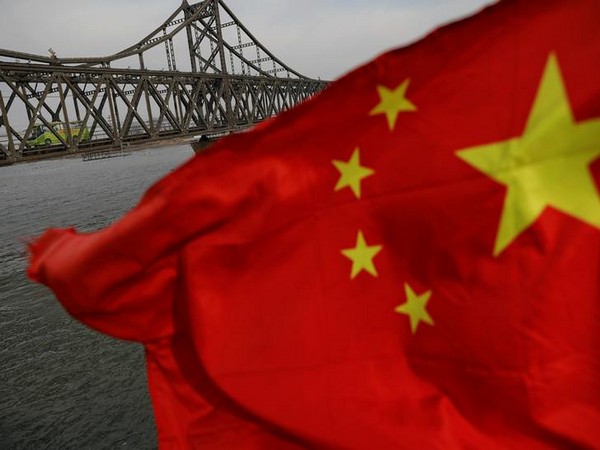In an alarming trend, big Chinese corporations have been laying off large numbers of employees since the beginning of the year. According to Greek City Times, the large-scale layoffs by big giants have directly affected two groups – the laid-off employees themselves and fresh graduates.
According to an official Communist Party of China (CPC) announcement, the jobless rate among urban youngsters aged 16 to 24 reached 20.4 per cent in April of this year. Experts warn that while this statistic may be lower than the real rate, it constitutes a worrisome signal.
According to the most recent data from China’s National Bureau of Statistics, the urban youth unemployment rate reached 20 per cent in April 2023 for the first time since statistics became available in January 2018, according to Greek City Times.
Greek City Times is a leading Greek lifestyle site, designed to celebrate all things positive and progressive about Greek culture.
This year, the number of Chinese university graduates has reached 11.58 million, an increase of 820,000 compared to the previous year, leading to a situation commonly called “post-graduation unemployment.”
Simultaneously, major Chinese companies are adding to the job market’s chill by implementing layoffs. According to a survey report by global consulting firm AlixPartners released on March 27, 17 per cent of mainland companies have already commenced employee layoffs due to the economic downturn and intensifying geopolitical crises.
Furthermore, 43 per cent of the surveyed companies plan to lay off employees or freeze recruitment in the coming year, Greek City Times reported.
Prominent Chinese Internet technology giants, including ByteDance, Tencent, and JD.com, resorted to layoffs earlier this year. ByteDance, in particular, announced job cuts at the end of 2022, with an estimated optimisation scale of around 10 per cent. Other companies such as Station B, Xiaomi, and Zhihu have also made news headlines for their layoff plans.
As of last month (May), Alibaba’s layoffs affected various sectors, including Taotian Group, Cainiao, Local Life, Cloud Smart Group, and Dawen Entertainment. A total of 25,000 positions were eliminated, representing a 25 per cent reduction in Taobao Tmall’s production and research sector and a 7 per cent reduction in Alibaba Cloud Smart’s workforce, among other cuts, Greek City Times reported.
According to employee data disclosed in Ali’s latest financial report, the number of employees stood at 235,216 as of March 31, 2023, compared to 239,740 by December 31, 2022. This indicates a decrease of 4,524 employees during the first quarter of this year.
Alibaba’s employee reductions are as follows: 4,375 in the first quarter of 2022, 9,241 in the second quarter, 1,797 in the third quarter, and 4,163 in the fourth quarter. Over the course of five quarters, including the reduction of 4,524 in the first quarter of this year, Ali’s workforce has shrunk by 24,100, Greek City Times reported.
Similarly, Tencent, another Chinese Internet giant, saw a decline in employee numbers from 116,213 as of March 31, 2022, to 108,436 by December 31, 2022. The figure dropped further to 106,221 as of March 31 this year, almost 10,000 fewer than in the same period last year.
The large-scale layoffs by these enterprises have directly affected two groups – the laid-off employees themselves and fresh graduates. An example is the recent termination of contracts for fresh graduates by China Innovation Aviation. These students were recruited by the company last fall and signed employment contracts, Greek City Times reported.
However, on May 24, the recruiting group was abruptly disbanded, and the terminated students were asked to provide their bank account details and prepay 3,000 yuan (approximately USD 421) as liquidated damages, citing a job change as the reason for contract termination.
According to information shared by employees of China Innovation Aviation, the company cancelled the contracts of all 2023 fresh graduates recruited in the fall of last year and the spring of this year. The affected number of individuals is estimated at least 2,000 across various branches such as Changzhou, Hefei, Chengdu, Xiamen, and Wuhan, Greek City Times reported.
Experts compare the present situation and the period of the Cultural Revolution, emphasising that the current circumstances are more severe. During the late stage of the Cultural Revolution, China experienced economic collapse and a surge in unemployment.
At that time, Mao Zedong, the leader of the Communist Party of China, called upon educated youth to go to rural areas, effectively driving the young population away from cities, Greek City Times reported.
Xi Jinping aims to encourage young people to engage in rural work but lacks the persuasive power to achieve this goal. As a result, the CCP faces a significant problem, with estimates suggesting that 70 per cent to 80 per cent of this year’s college graduates will struggle to find employment.

